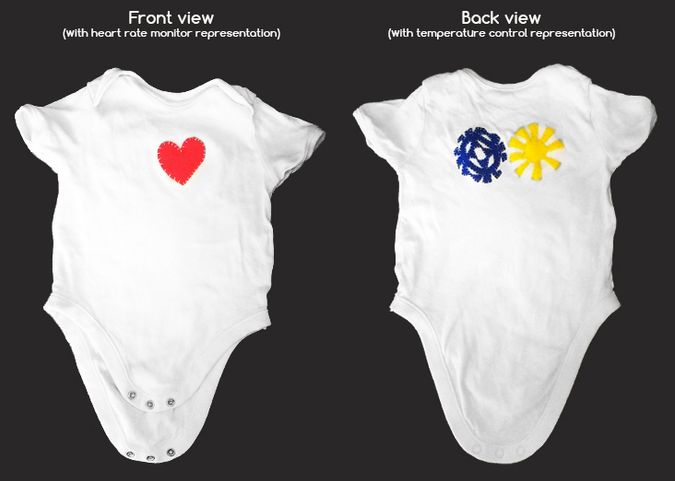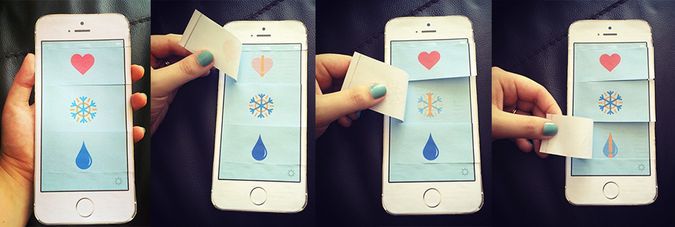
Creative Design Lab: Wearable technology week 3
Last week, I did a lot of ideas generation, and used various creative methods to expand on my ideas. I then conducted lots of research into types of technology, specifically in terms of fabric, sensors and detection. This week, I started to create my prototype based on this.
It consists of a vest and an app with an interface as detailed below.
PROTOTYPE PART 1: VEST
Hot and cold
Made from a special fabric that contains an active cooling agent, which reacts with the wearer’s own sweat to lower their body temperature. It also has fibres woven into the fabric that can be switched on if the wearer becomes too cold, and heats up the body until an optimum temperature has been reached. This combination works to keep the body temperature constant, and help the infant to sleep through the night.
Vital signs
The vest has stainless steel yarns woven into the fabric itself that monitors the infant's heart rate, respiration rate and skin temperature, and uses integrated Bluetooth to send that information to the app. The monitoring of vital signs can relieve parent’s anxiety, and lower the risk of sudden infant death syndrome.
Moisture
There are also sensors in the poppers at the bottom of the vest. They can detect if the child is wet, which can help during the potty training phase, and to alert parents to any leaks.
An important part of this vest is its ability to go through the washing machine/tumble drier and without any parts being removed, for easy cleaning. This is because it has all the elements woven into the fabric itself.
PROTOTYPE PART 2: APPLICATION
The application will be in the app store, available to download for free to the user’s smartphone or tablet. It connects to the vest using Bluetooth and offers a simple visual display of the three main elements included in this design. It would set off an alarm if the device detects that human intervention is needed, and this would be reflected in the display.
I wanted to keep the design really simple, as it would mainly be used at night while the parent is only semi-awake and often drowsy. I also decided not to put the numerical value of the heart rate/temperate as it could be confusing and some users wouldn’t know what the ideal is.
To present how this would function, I made a paper prototype of this app.
It is a good representation of how the app would set off a warning for one or any combination of the elements.



